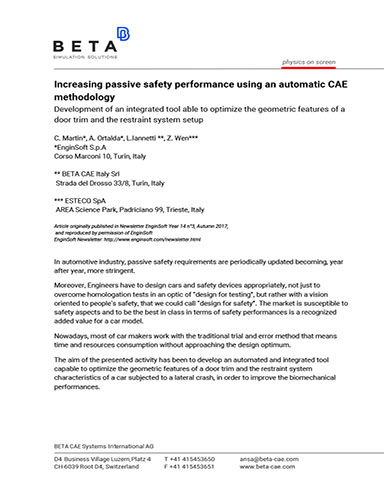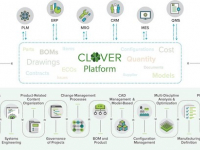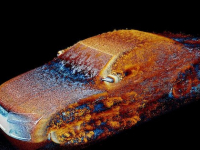
December 12, 2018
In automotive industry, passive safety requirements are periodically updated becoming, year after year, more stringent.
Moreover, Engineers have to design cars and safety devices appropriately, not just to overcome homologation tests in an optic of “design for testing”, but rather with a vision oriented to people's safety, that we could call “design for safety”. The market is susceptible to safety aspects and to be the best in class in terms of safety performances is a recognized added value for a car model.
Nowadays, most of car makers work with the traditional trial and error method that means time and resources consumption without approaching the design optimum.
The aim of the presented activity has been to develop an automated and integrated tool capable to optimize the geometric features of a door trim and the restraint system characteristics of a car subjected to a lateral crash, in order to improve the biomechanical performances.
Fill out the information below to download the resource.
Latest News









